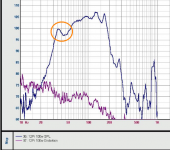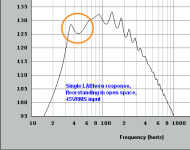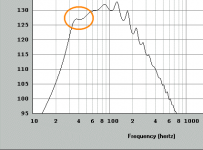I know it's been a while, but i just noticed & compared these,
Comparison with the LABhorn PiSpeakers Forum - Comparison with the LABhorn - Wayne Parham, November 16, 2007 at 16:07:28

12 Pi observations and comparisons with other designs PiSpeakers Forum - 12 ? observations and comparisons with other designs - Wayne Parham, July 08, 2005 at 03:53:47

Look at the areas i've highlighted. According to the 12Pi www, on the same page they say & show that the 12Pi LH Looks & measures like this

What gives ?
Comparison with the LABhorn PiSpeakers Forum - Comparison with the LABhorn - Wayne Parham, November 16, 2007 at 16:07:28
12 Pi observations and comparisons with other designs PiSpeakers Forum - 12 ? observations and comparisons with other designs - Wayne Parham, July 08, 2005 at 03:53:47
Look at the areas i've highlighted. According to the 12Pi www, on the same page they say & show that the 12Pi LH Looks & measures like this
What gives ?
Attachments
You will often notice discrepancies between sims and measurements, and it's often because the sims are not accurate or the sim and measurement are looking at different things (different power levels for example).
Here's the measurements of the 12 pi from the 2005 Hornsub Shootout. The 100 watt measurement on this page looks pretty similar to the 100 watt measurement you posted here - the dip above the low knee is there and similar looking.
ProSpeakers Forum - Re: Hornsub shootout RESULTS - 12? - Wayne Parham, October 15, 2005 at 14:20:02
Note that as they add more and more power the response gets more and more peaky and they never measured at 1w/1m, which is what Hornresp assumes.
Would that dip above the low knee have gone away or at least been smaller if measured at 1w/1m? Maybe, it might have been a bit smaller but it probably wouldn't disappear. Is the 12 pi sim you posted here accurate? Maybe enough for what Wayne wanted but probably not perfectly accurate.
Regardless, the Lab and the 12 pi are both legacy designs, few people are building Labs these days and even fewer building 12 pis so not too worth worrying about, although if you wanted to do a more in depth study and reverse engineer the 12 pi out of curiosity that's up to you.
Here's the measurements of the 12 pi from the 2005 Hornsub Shootout. The 100 watt measurement on this page looks pretty similar to the 100 watt measurement you posted here - the dip above the low knee is there and similar looking.
ProSpeakers Forum - Re: Hornsub shootout RESULTS - 12? - Wayne Parham, October 15, 2005 at 14:20:02
Note that as they add more and more power the response gets more and more peaky and they never measured at 1w/1m, which is what Hornresp assumes.
Would that dip above the low knee have gone away or at least been smaller if measured at 1w/1m? Maybe, it might have been a bit smaller but it probably wouldn't disappear. Is the 12 pi sim you posted here accurate? Maybe enough for what Wayne wanted but probably not perfectly accurate.
Regardless, the Lab and the 12 pi are both legacy designs, few people are building Labs these days and even fewer building 12 pis so not too worth worrying about, although if you wanted to do a more in depth study and reverse engineer the 12 pi out of curiosity that's up to you.
On top of all that there's this, a quote from Danley from a heated discussion with Wayne about the Lab vs 12 pi.
There's more discussion of the validity of sims in the discussion too, it's here - Hornsub shootout
Personally I could not disagree more. Usually if the sims don't match the measurement it's because the sims are lazy and sloppy. Danley doesn't seem to think so. So take that for what it's worth as a peripheral point of view on this topic.
(There's not nearly enough segments in Hornresp to sim the Labhorn accurately but that doesn't mean you can't get really close. I have to strongly disagree with Danley that "Some of the internal shapes are complicated and serve two purposes, it would be hard to model in a simple freeware program like McBeans, perhaps that accounts for the difference."
I've had fantastic good fortune comparing ACCURATE sims to high quality measurements so I don't know why Danley can't make sims work. But I guess as always YMMV.
With all your arm waving, the entire time you ignored the fact that your computer model for the lab looks little like the measured response (which normally is a red flag).
There's more discussion of the validity of sims in the discussion too, it's here - Hornsub shootout
Personally I could not disagree more. Usually if the sims don't match the measurement it's because the sims are lazy and sloppy. Danley doesn't seem to think so. So take that for what it's worth as a peripheral point of view on this topic.
(There's not nearly enough segments in Hornresp to sim the Labhorn accurately but that doesn't mean you can't get really close. I have to strongly disagree with Danley that "Some of the internal shapes are complicated and serve two purposes, it would be hard to model in a simple freeware program like McBeans, perhaps that accounts for the difference."
I've had fantastic good fortune comparing ACCURATE sims to high quality measurements so I don't know why Danley can't make sims work. But I guess as always YMMV.
they never measured at 1w/1m, which is what Hornresp assumes.
Just to clarify - the Hornresp (default) assumption is 2.83V/1m, not 1W/1m.
Yeah, I guess I did a couple sloppy faux pas here.
This should say the sim INPUTS are not accurate, not the sims themselves.
Yes, Hornresp assumes whatever voltage you specify at 1 meter. I always enter 1 watt in reference to driver Re and let Hornresp calculate Eg for my low power sims, this works out to 1 watt. For people using 2.83 V or 1 watt in reference to driver's nominal impedance, those sims are not actually 1 watt.
At the shootout they didn't measure at 1 watt or 1 meter, when measuring at power levels greater than small signal or at distances greater than 1 meter the sim loses validity, which was my point.
You will often notice discrepancies between sims and measurements, and it's often because the sims are not accurate ...
This should say the sim INPUTS are not accurate, not the sims themselves.
Just to clarify - the Hornresp (default) assumption is 2.83V/1m, not 1W/1m.
Yes, Hornresp assumes whatever voltage you specify at 1 meter. I always enter 1 watt in reference to driver Re and let Hornresp calculate Eg for my low power sims, this works out to 1 watt. For people using 2.83 V or 1 watt in reference to driver's nominal impedance, those sims are not actually 1 watt.
At the shootout they didn't measure at 1 watt or 1 meter, when measuring at power levels greater than small signal or at distances greater than 1 meter the sim loses validity, which was my point.
@ just a guy
Re your link Hornsub shootout
Well that's something he agreed with, & "could" explain one of the 12Pi screenies. But the other 12Pi screenie shows a similar dip to the Labhorn ! Which is correct, i don't know ? Maybe WP mixed up his screenies ?
I noted that Ivan Beaver said,
I wonder what the paid ones are ?
Thanx for the replies
Re your link Hornsub shootout
.Tom Danley
Increasing the volumes beyond optimum, can help fill in the dip .
Well that's something he agreed with, & "could" explain one of the 12Pi screenies. But the other 12Pi screenie shows a similar dip to the Labhorn ! Which is correct, i don't know ? Maybe WP mixed up his screenies ?
I noted that Ivan Beaver said,
I've been very happy with McBean's Hornresp program * The software Tom uses is available to anyone. The problem is that you have to actually PAY for it and understand how to use it and what it's limitations are. Tom uses several programs, so he does not come up with a "single" predicted response curve. He takes what he needs from each of the programs and comes up with a "pencil and paper" type prediction. Kinda the "old school" way.
I wonder what the paid ones are ?
Thanx for the replies
JAG,Yeah, I guess I did a couple sloppy faux pas here.
At the shootout they didn't measure at 1 watt or 1 meter, when measuring at power levels greater than small signal or at distances greater than 1 meter the sim loses validity, which was my point.
The simulation never loses validity for what it represents, but a loudspeakers measured response at different drive levels, and to some extent, distances, and boundarys will always result in deviations from the sim.
Real tests of a high SPL design are not done at a single drive level.
Art
JAG,
The simulation never loses validity for what it represents ...
If you prefer a different wording, when measuring at power levels greater than small signal or at distances greater than 1 meter the sim is not an accurate reflection of the test conditions.
I wonder what the paid ones are ?
I don't think it matters much, the free ones are more than adequate.
For the record, Danley has stated that he does not use Hornresp and he has stated that he does use Akabak. I haven't seen him mention any other software by name. But a quick search of his user name with keywords "Hornresp", "Akabak", "simulation", "software", on any number of various forums he frequents might get you an answer if you really want to know. Or you could just ask him.
At small signal levels the free software is more than adequate. At large signal levels the fancy paid software might have some advantages but if you recognize how things behave when power levels get high you don't really need software to confirm your suspicions about what's going to happen.
And the reason Tom Danley no longer "needs to confirm suspicions about what's going to happen" is because of extensive measurement, and application of those measurements into iterations of the software he uses, much as you have "tricked" Hornresp into giving correct (or far more accurate) results from large voice coil drivers by looking at a number of measured vs. sim responses and figuring a "best match".At small signal levels the free software is more than adequate. At large signal levels the fancy paid software might have some advantages but if you recognize how things behave when power levels get high you don't really need software to confirm your suspicions about what's going to happen.
"On the shoulders of Giants we are able to see farther".
Very thankful for Mr. McBean & Danley for providing us the tools, and the many insights to use them.
That does not preclude the fact that the LAB (Live Audio Board) sub was an upgrade from one of Tom's "giants", Eugene Czerwinski's, design, the Cerwin(Czerwinski)-Vega "Earthquake" sub-woofer/LF noise generator that came decades before the Lab sub design.
Tom seldom (intentionally) gave away his "Tapped Horn" ideas for free, since he was quite aware at the time of the LAB project that the patent pending TH designs were the "missing link" between FLH and BR designs.
And as they say, "The rest (Wayne Parham 😉 ) is History".
Art
Last edited:
Very thankful for Mr. McBean & Danley for providing us the tools, and the many insights to use them.
...
And as they say, "The rest (Wayne Parham 😉 ) is History".
Art
Not quite Art. I'm listening to my Pi's as I'm typing this so you aren't close on the history comment 😀. If I met Wayne I'd buy him a beer for sure.
I'll +1 the thanks to McBean & Danley though.
Grant.
- Status
- Not open for further replies.
- Home
- Loudspeakers
- Subwoofers
- 12Pi Discrepancy !


